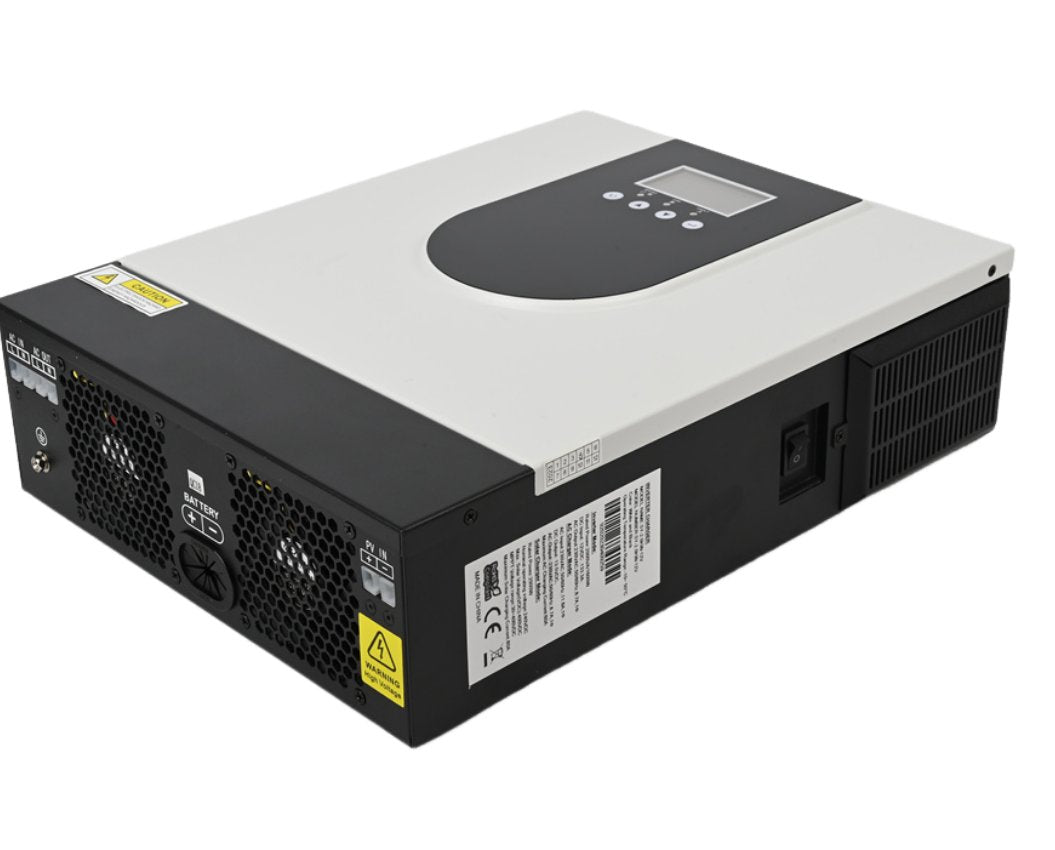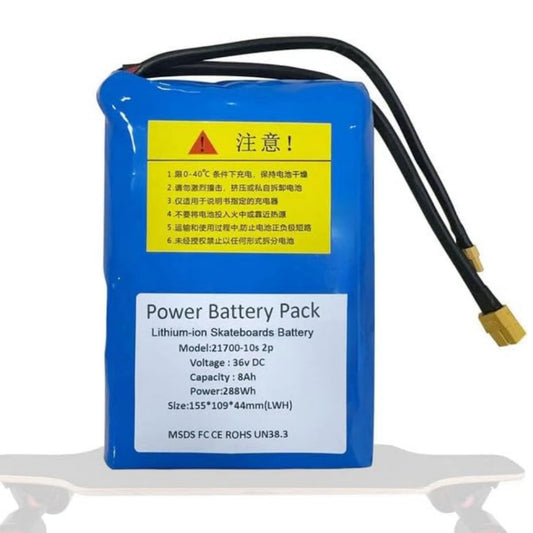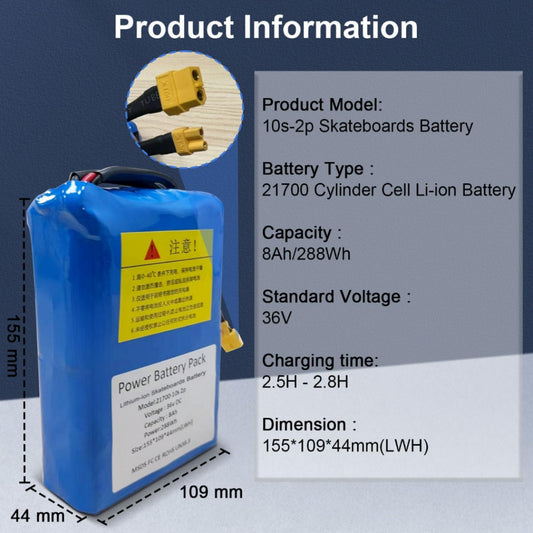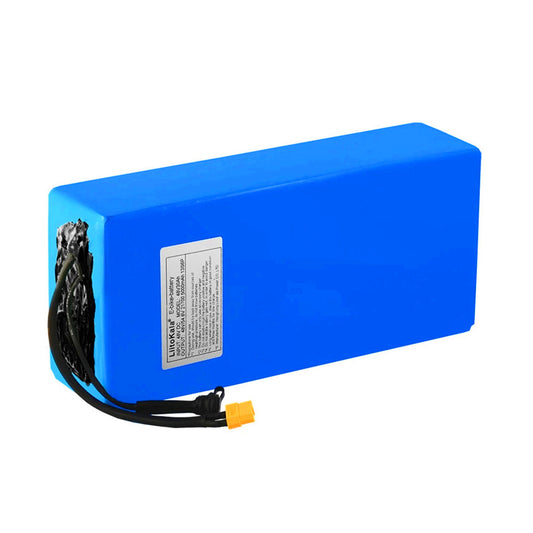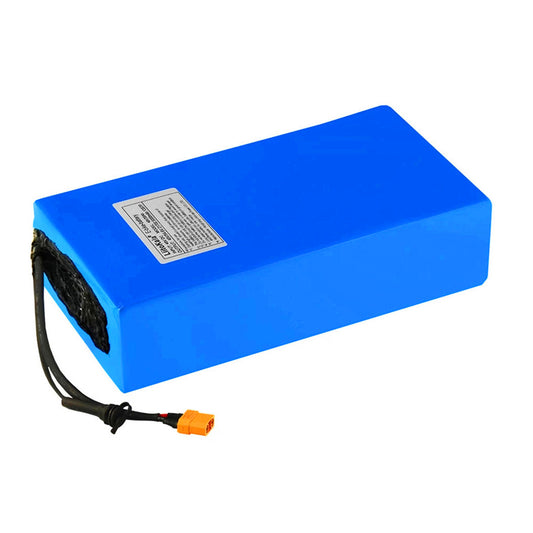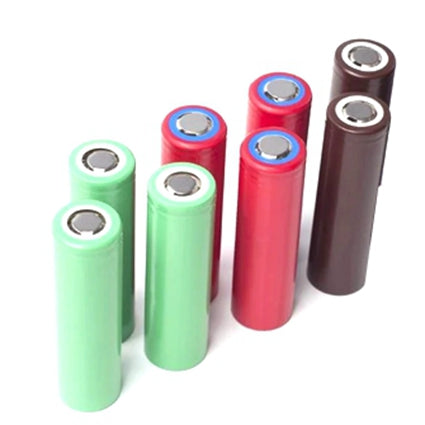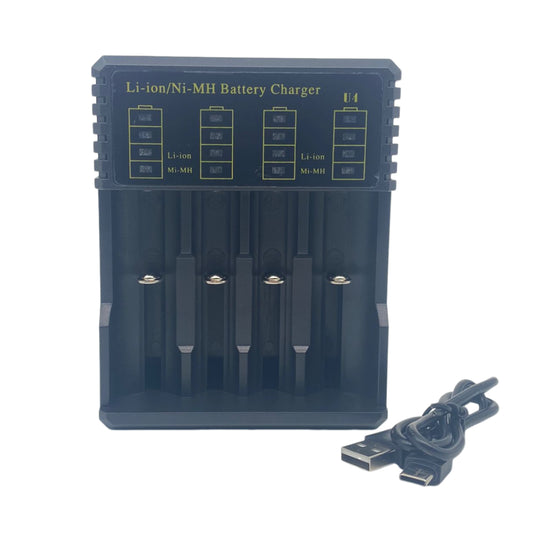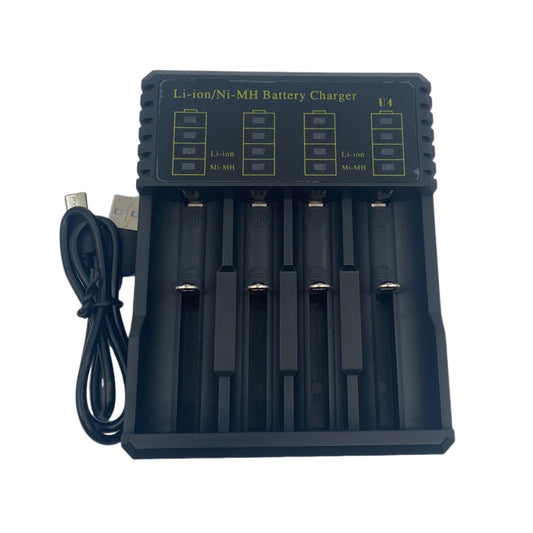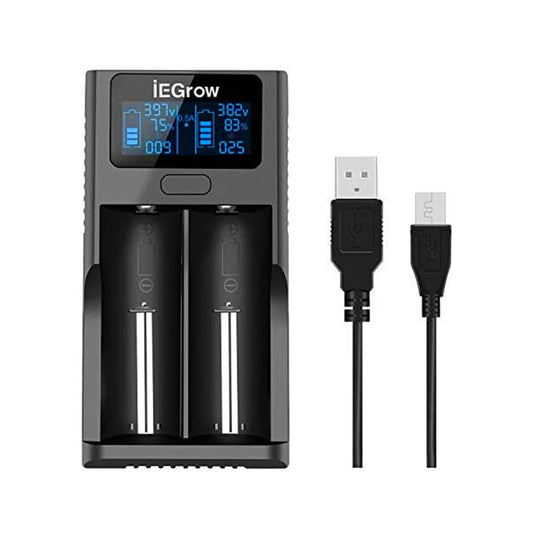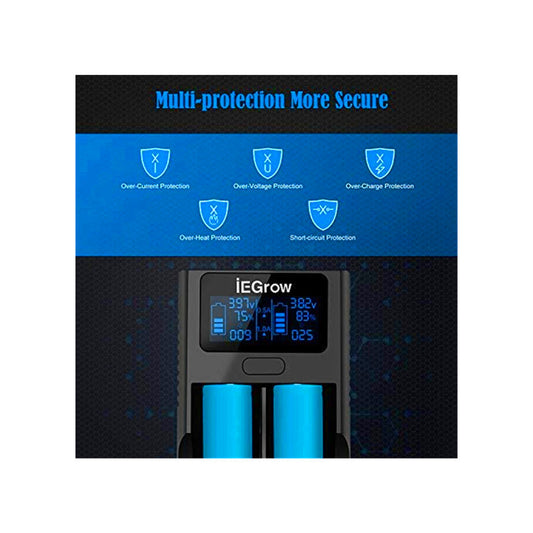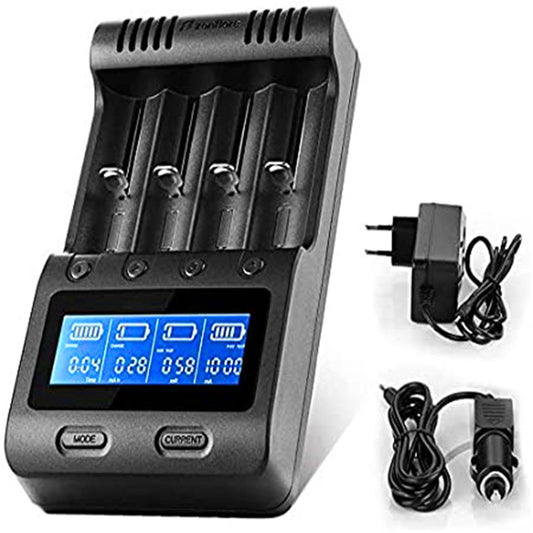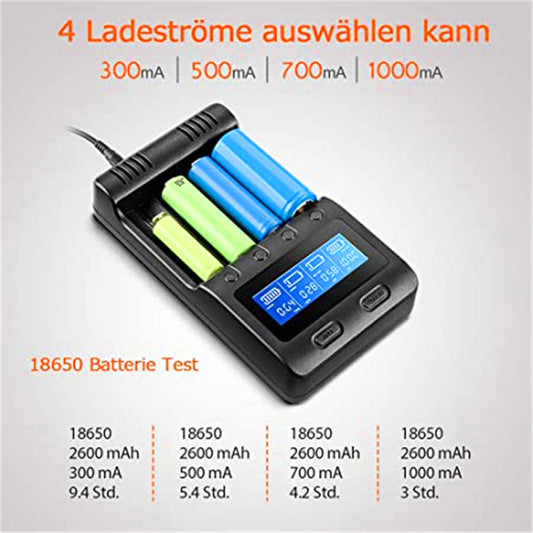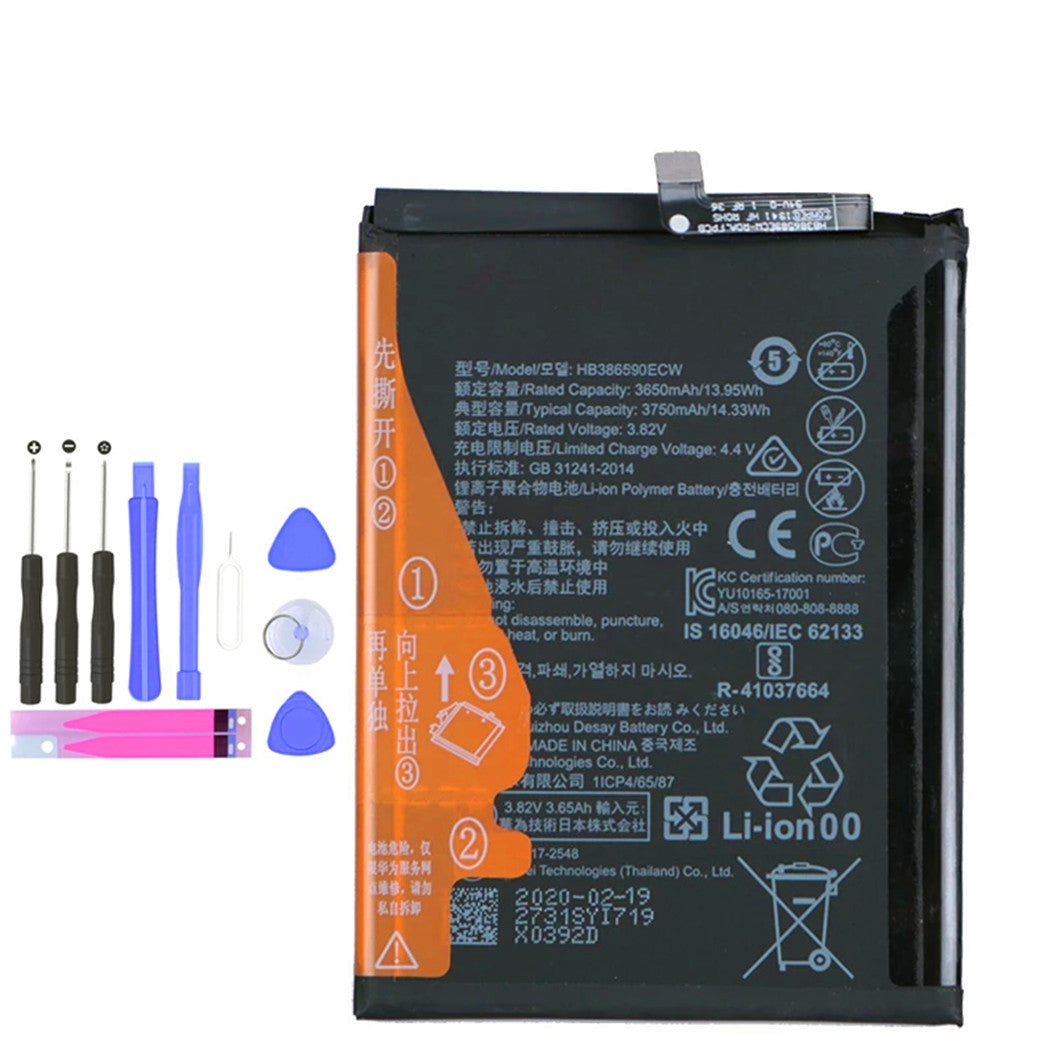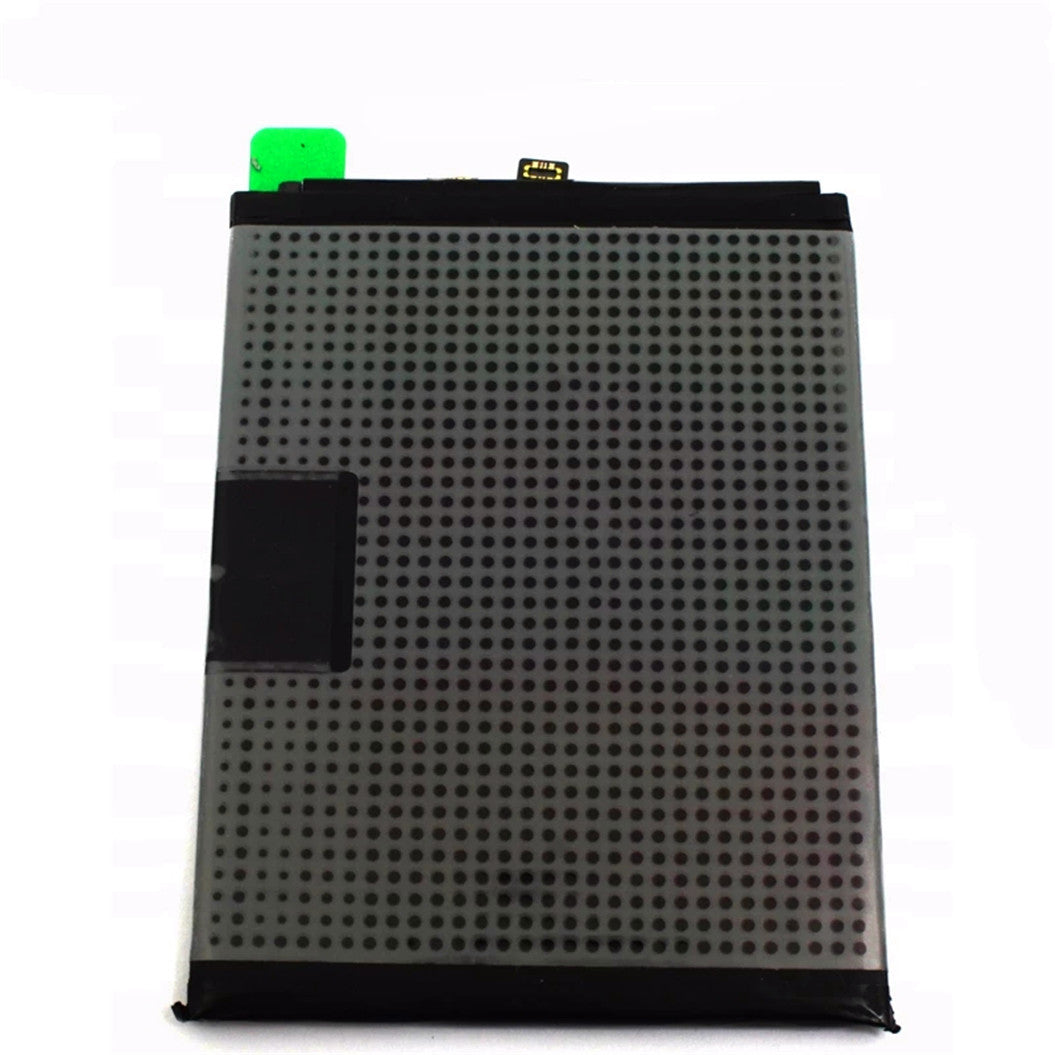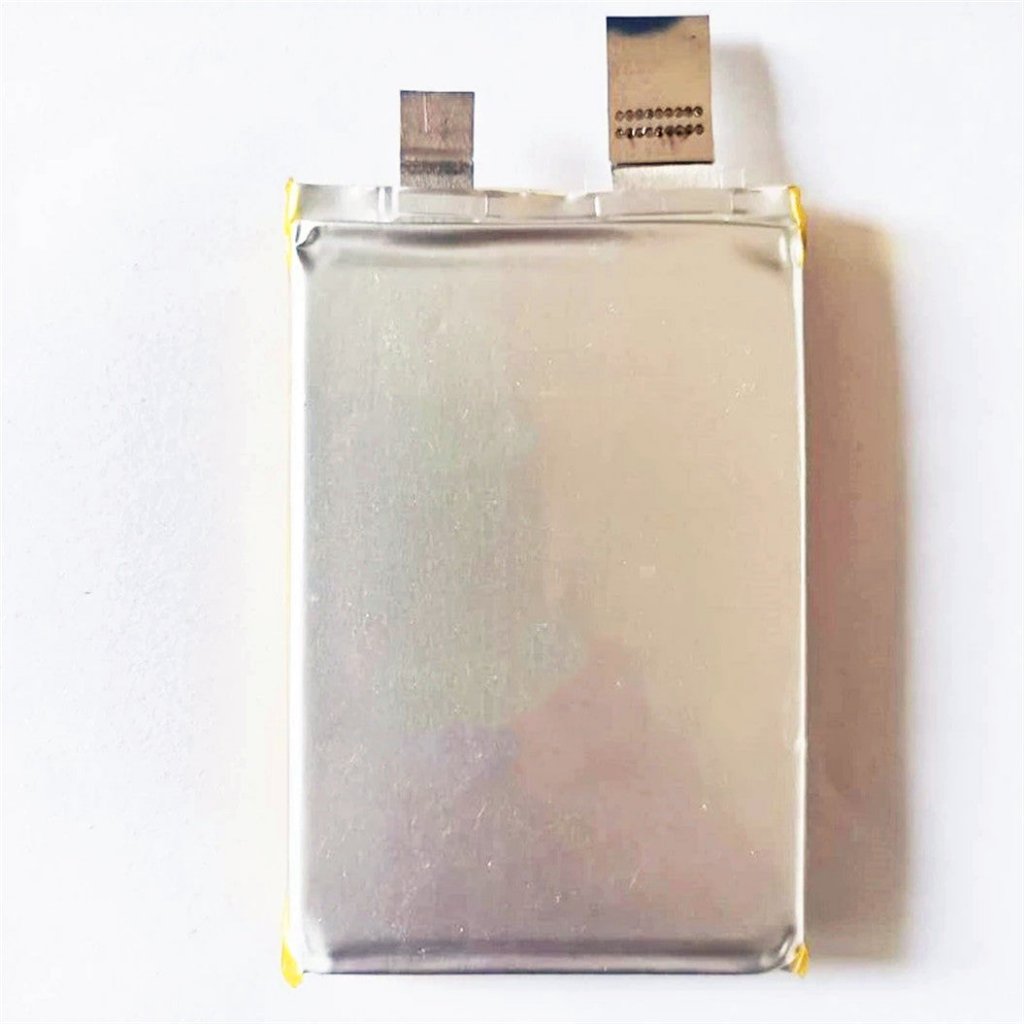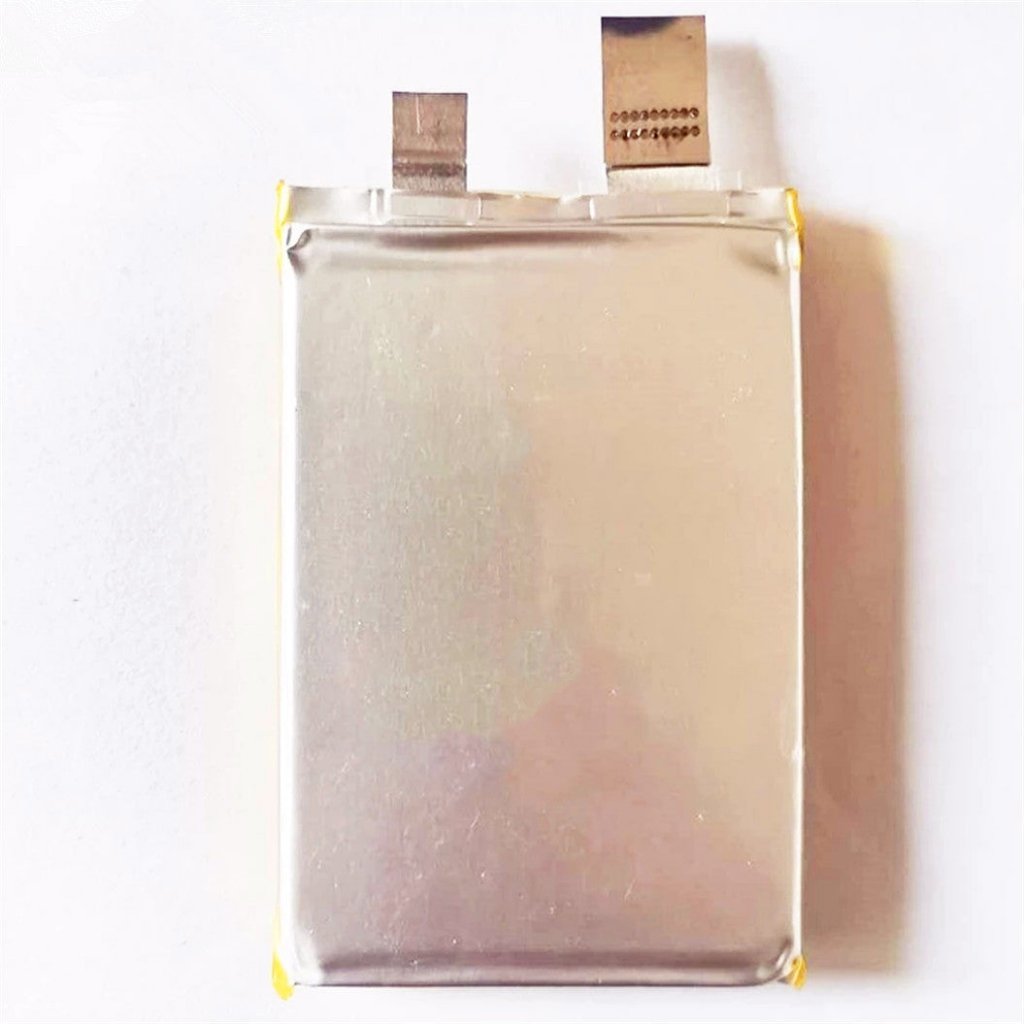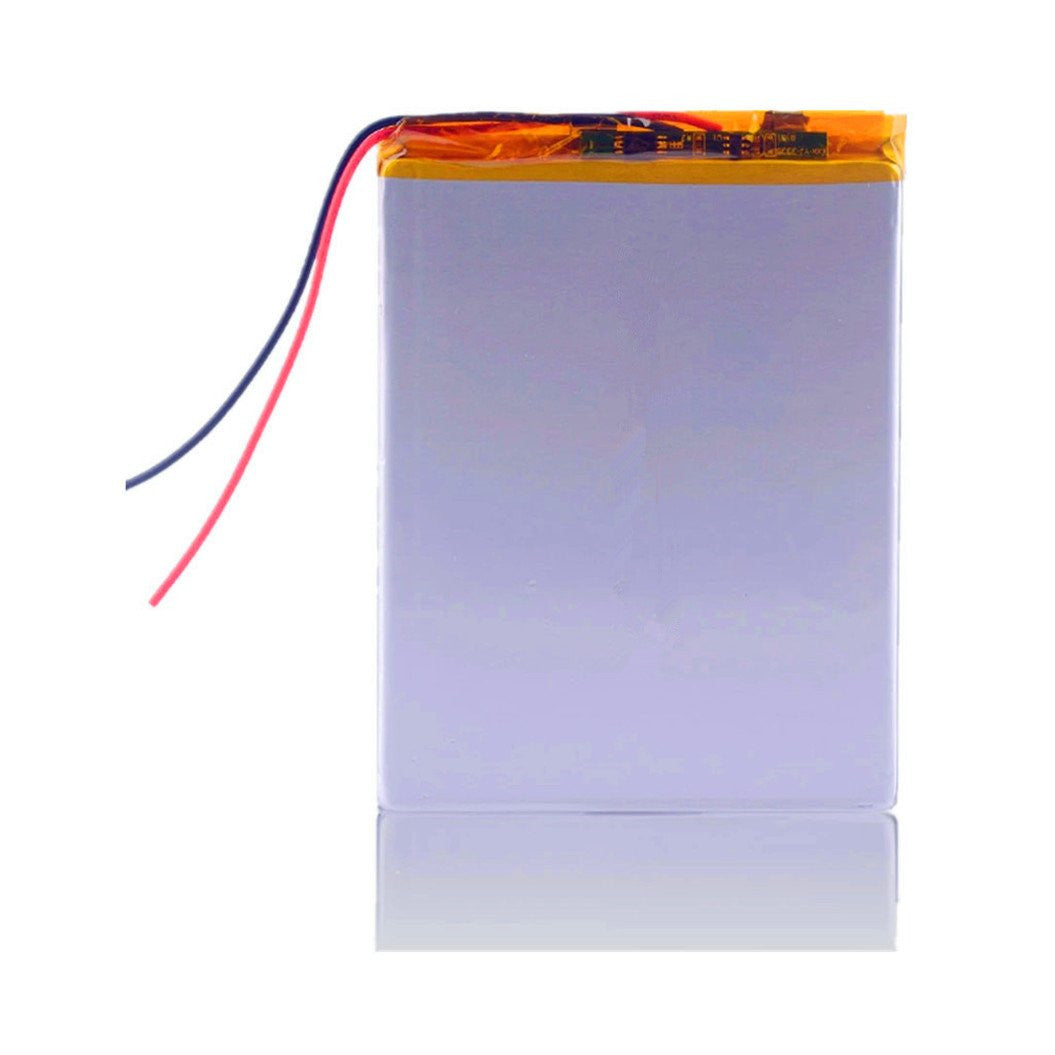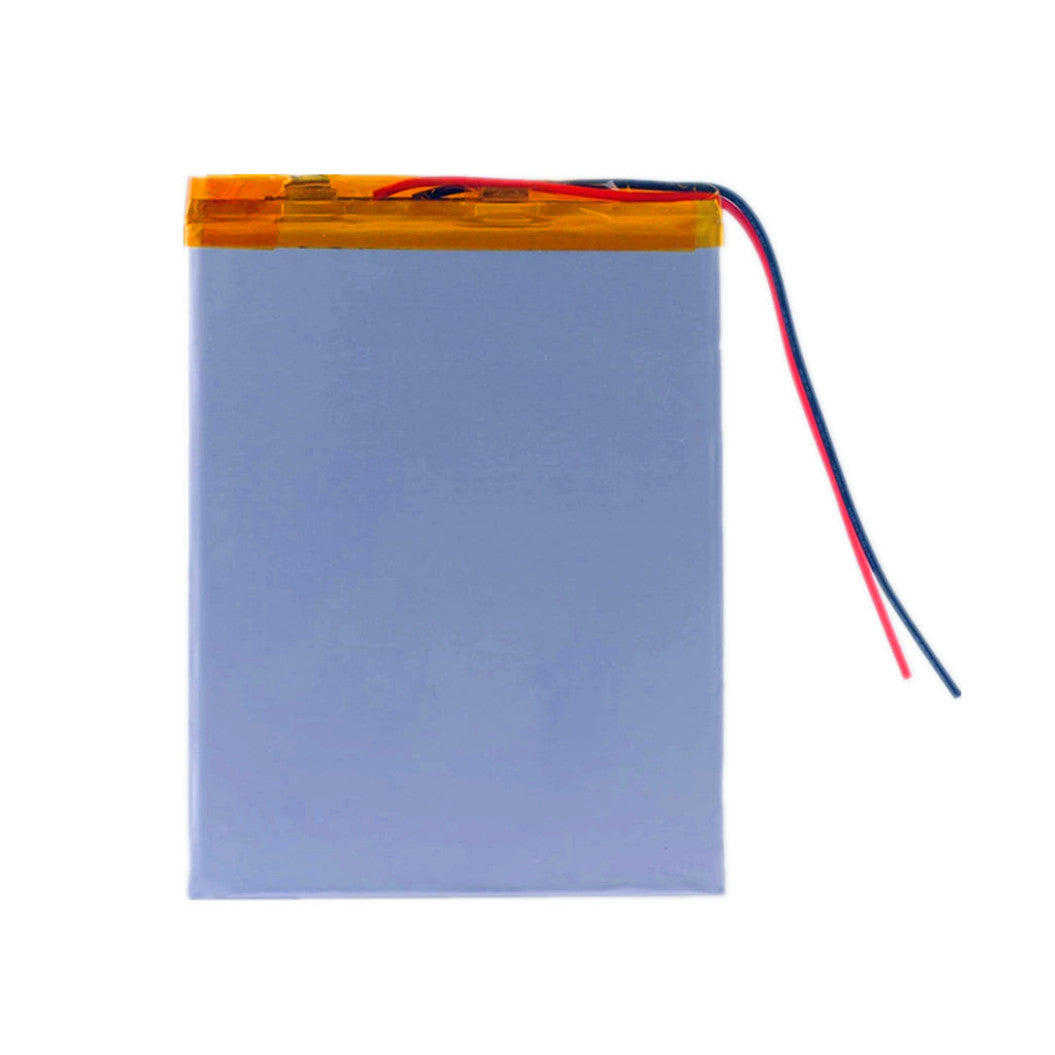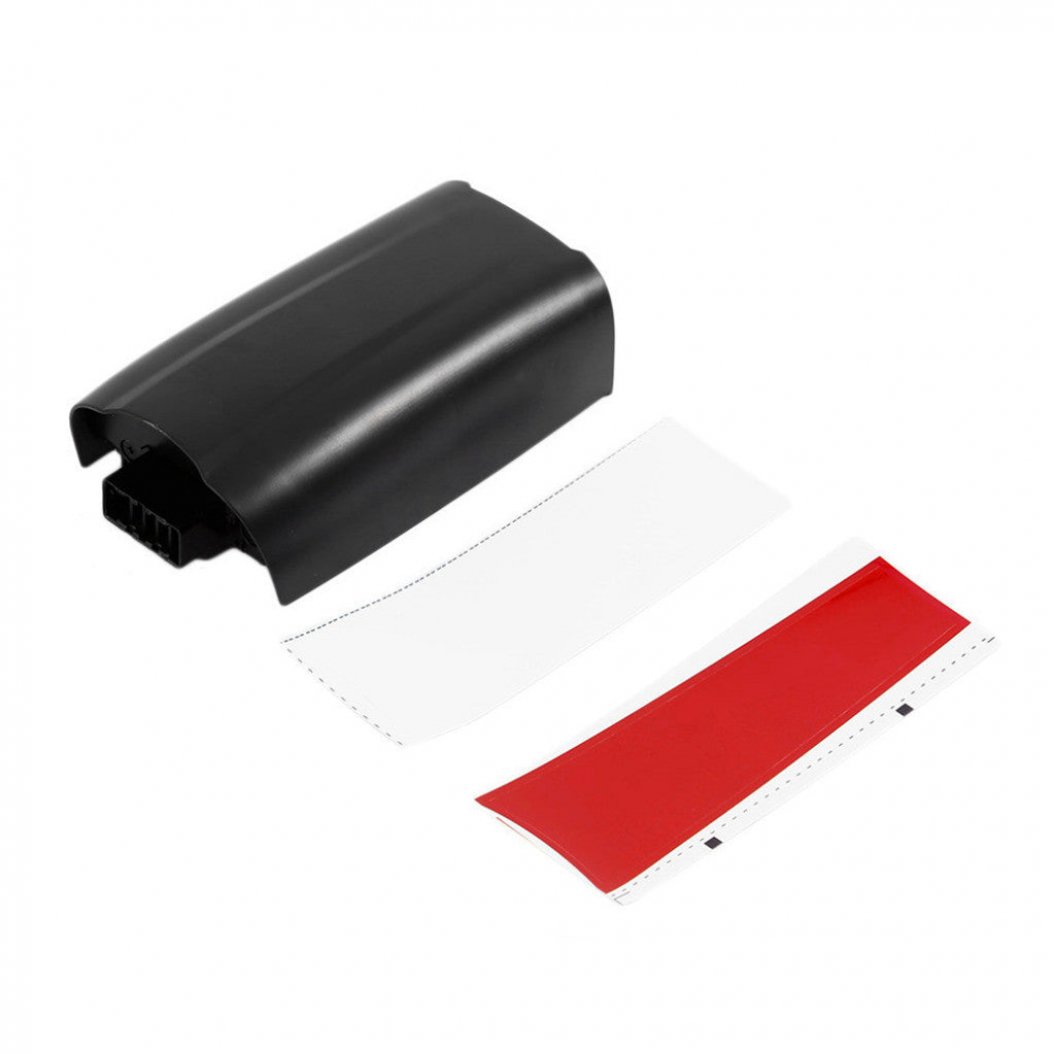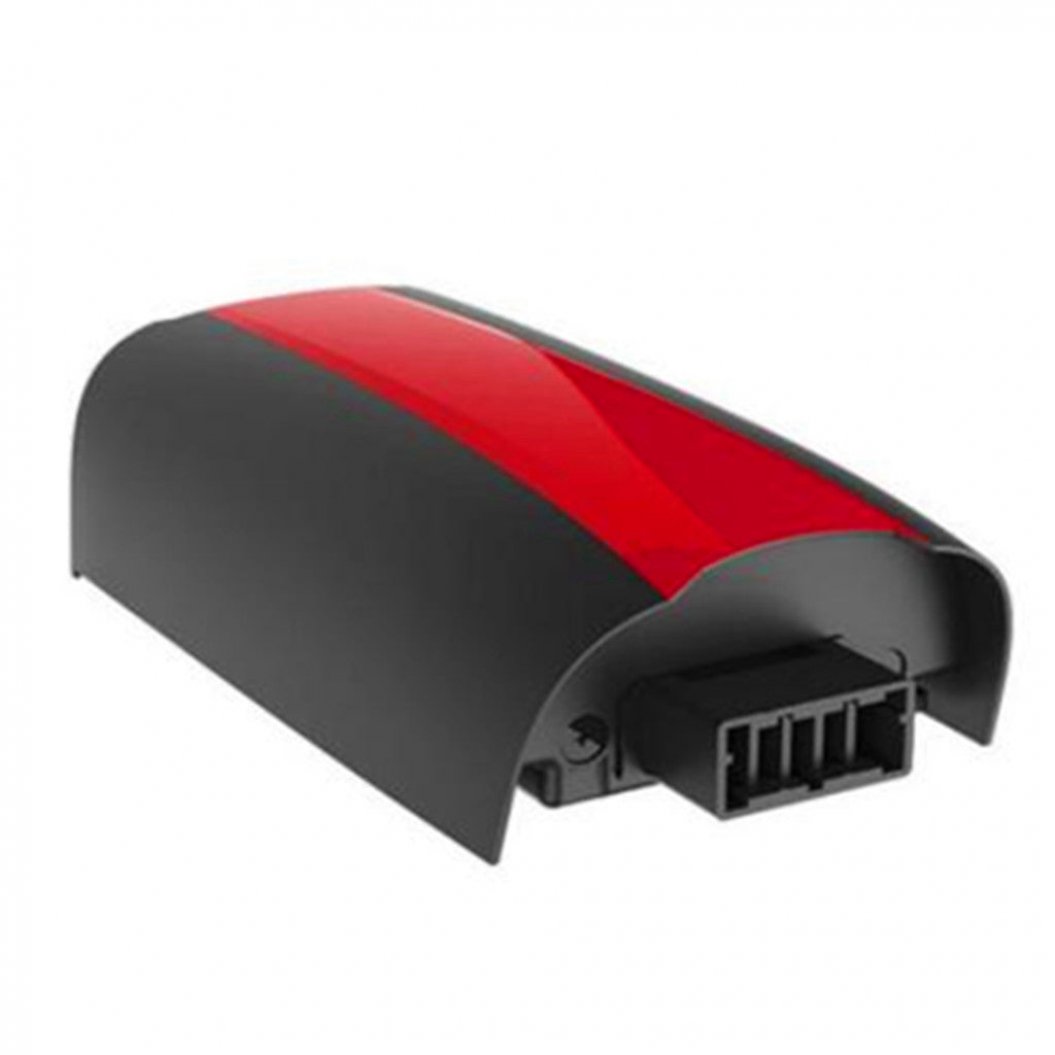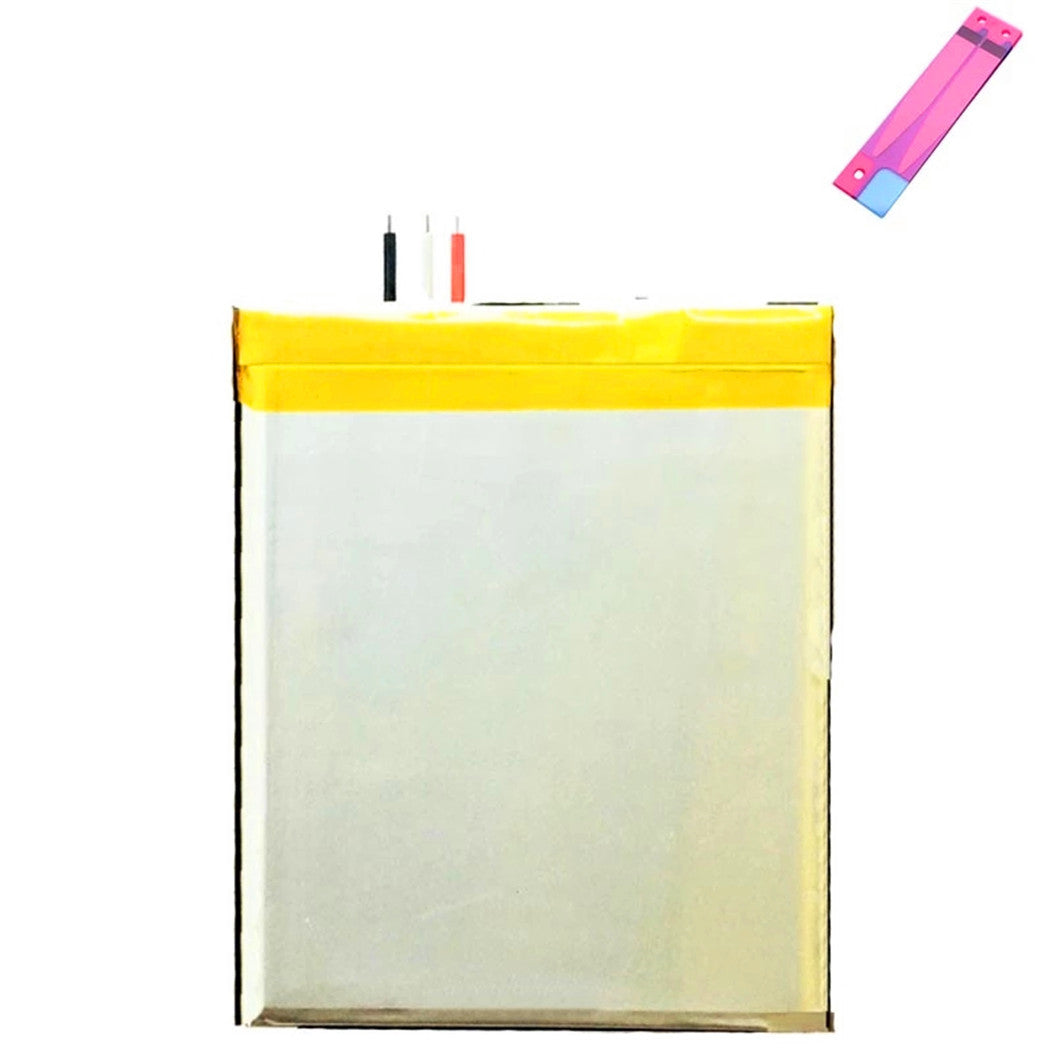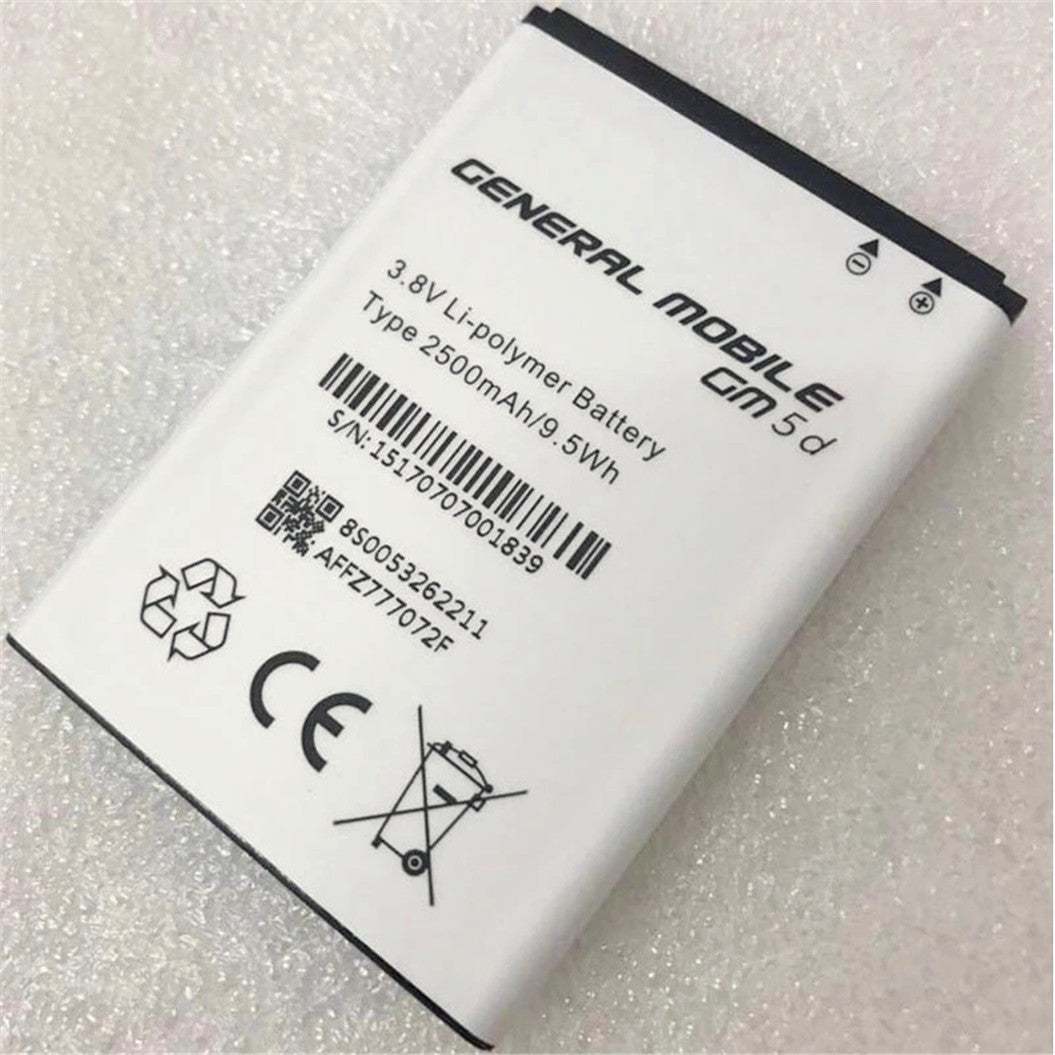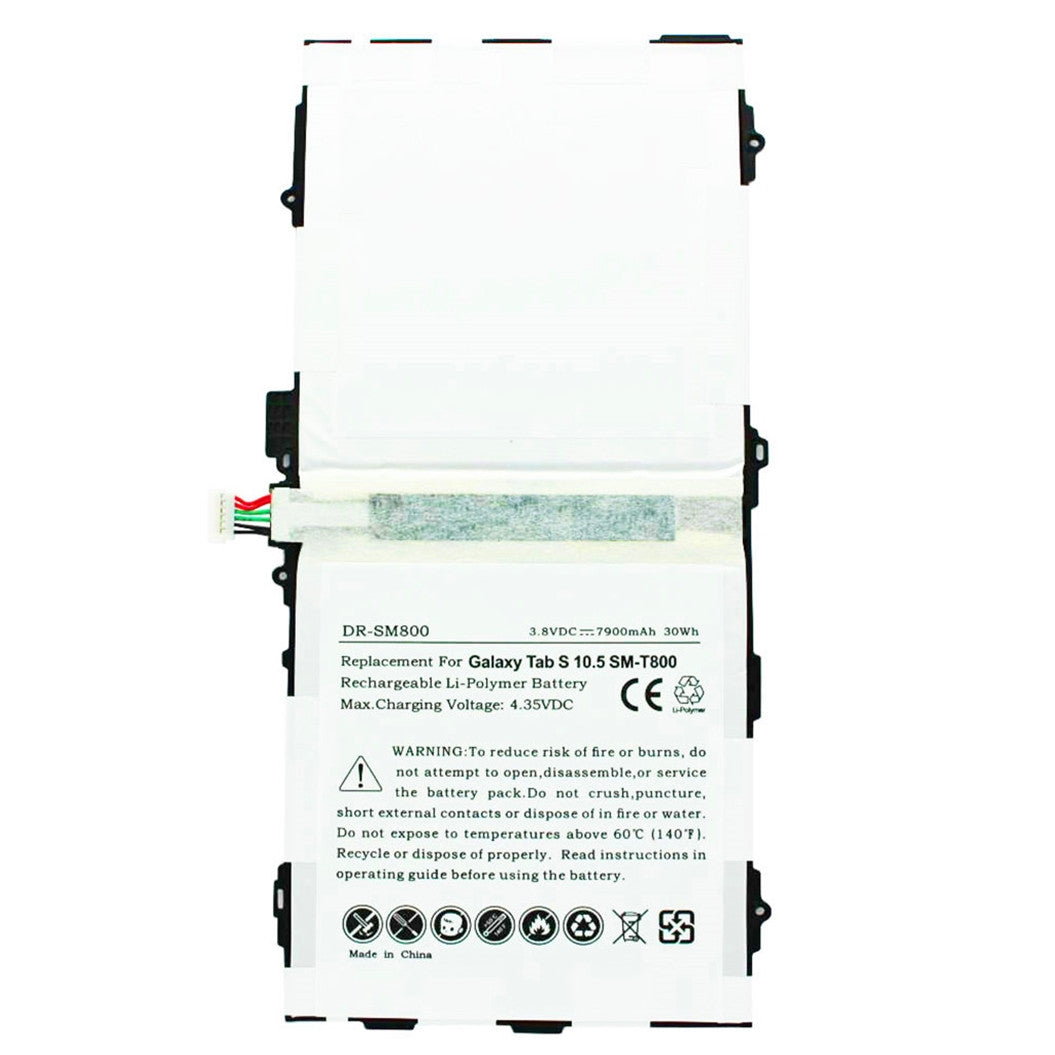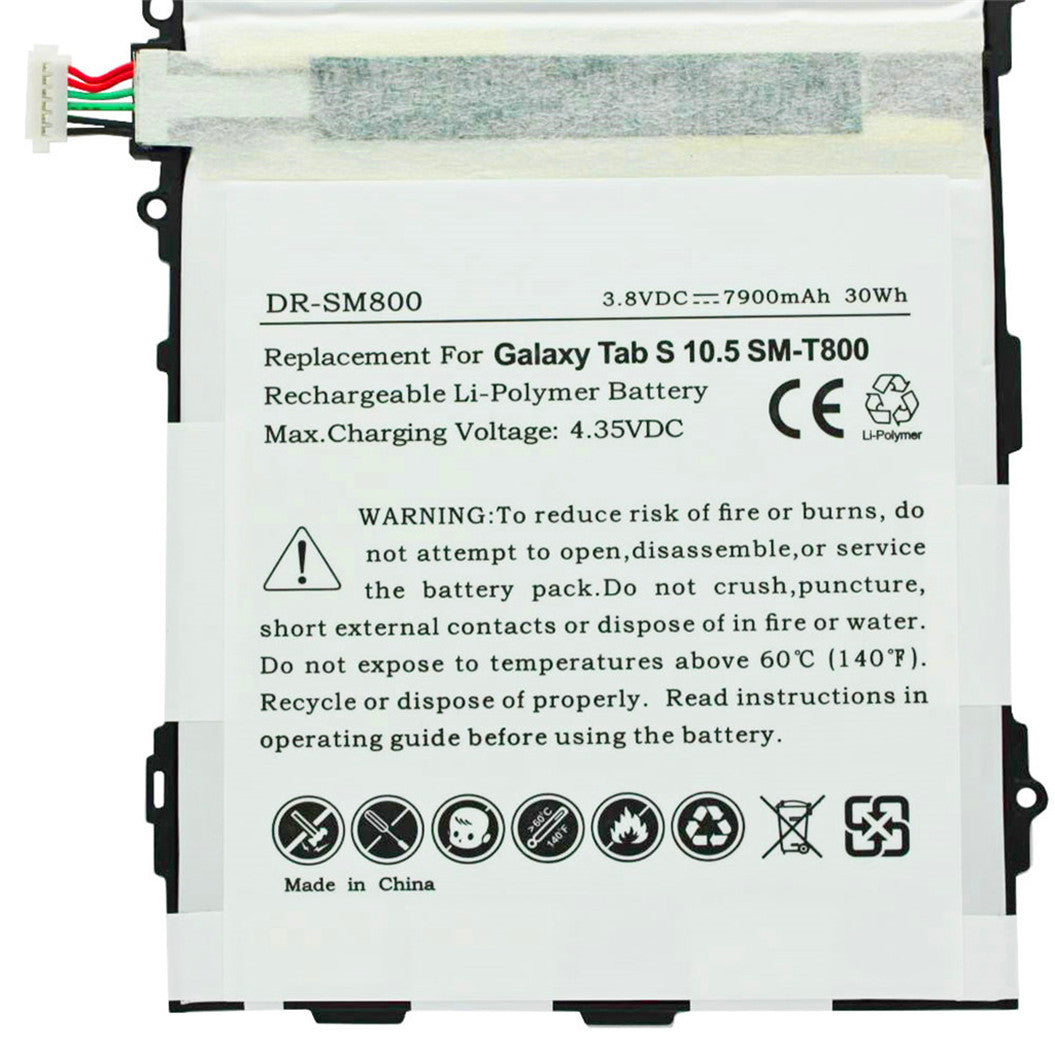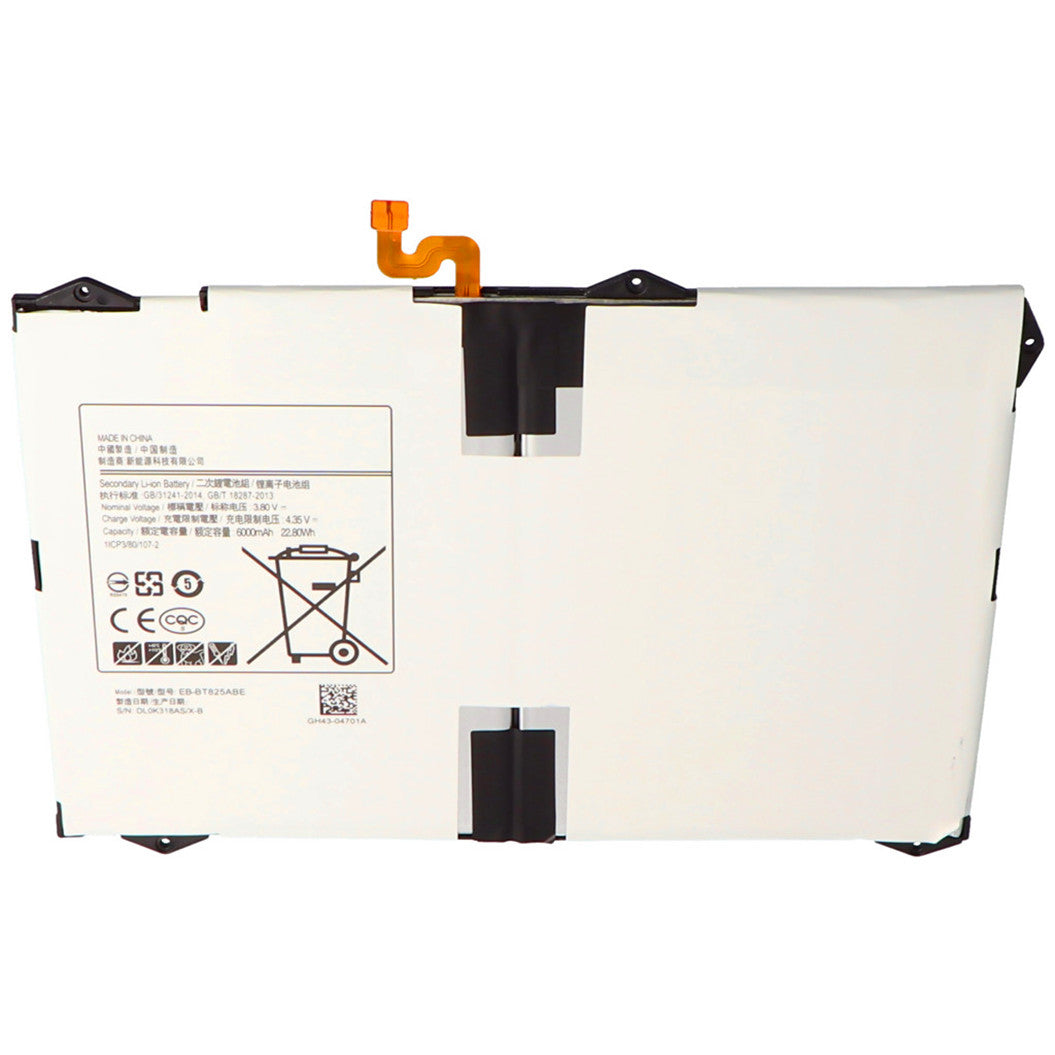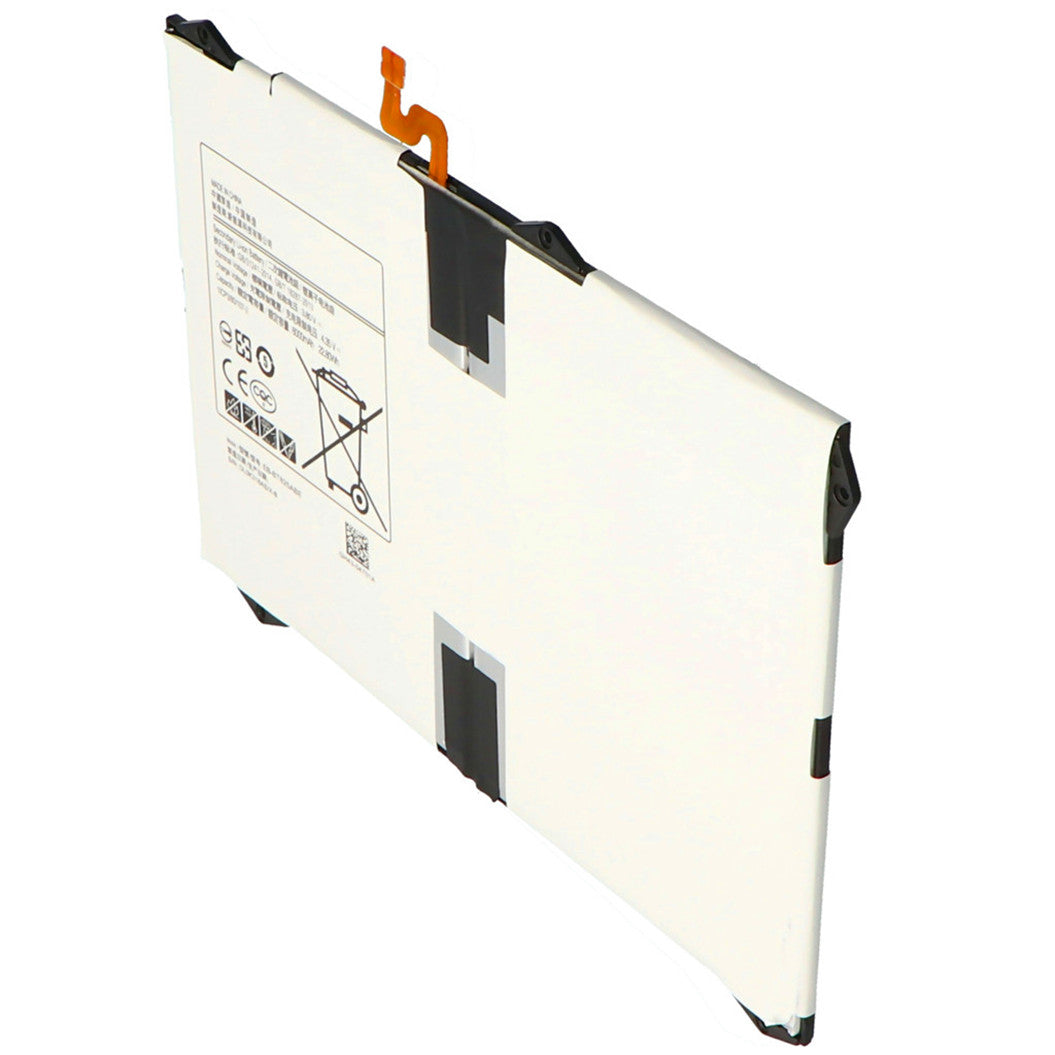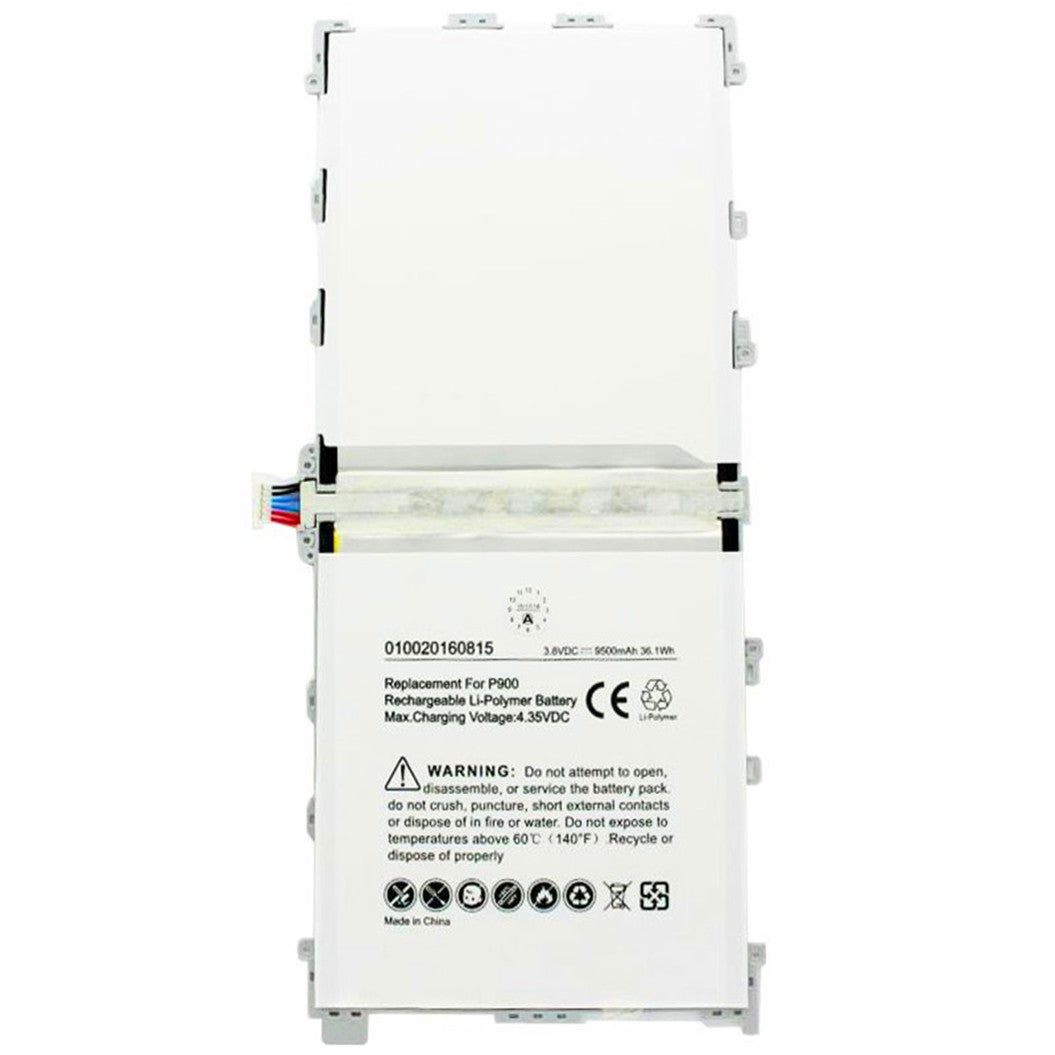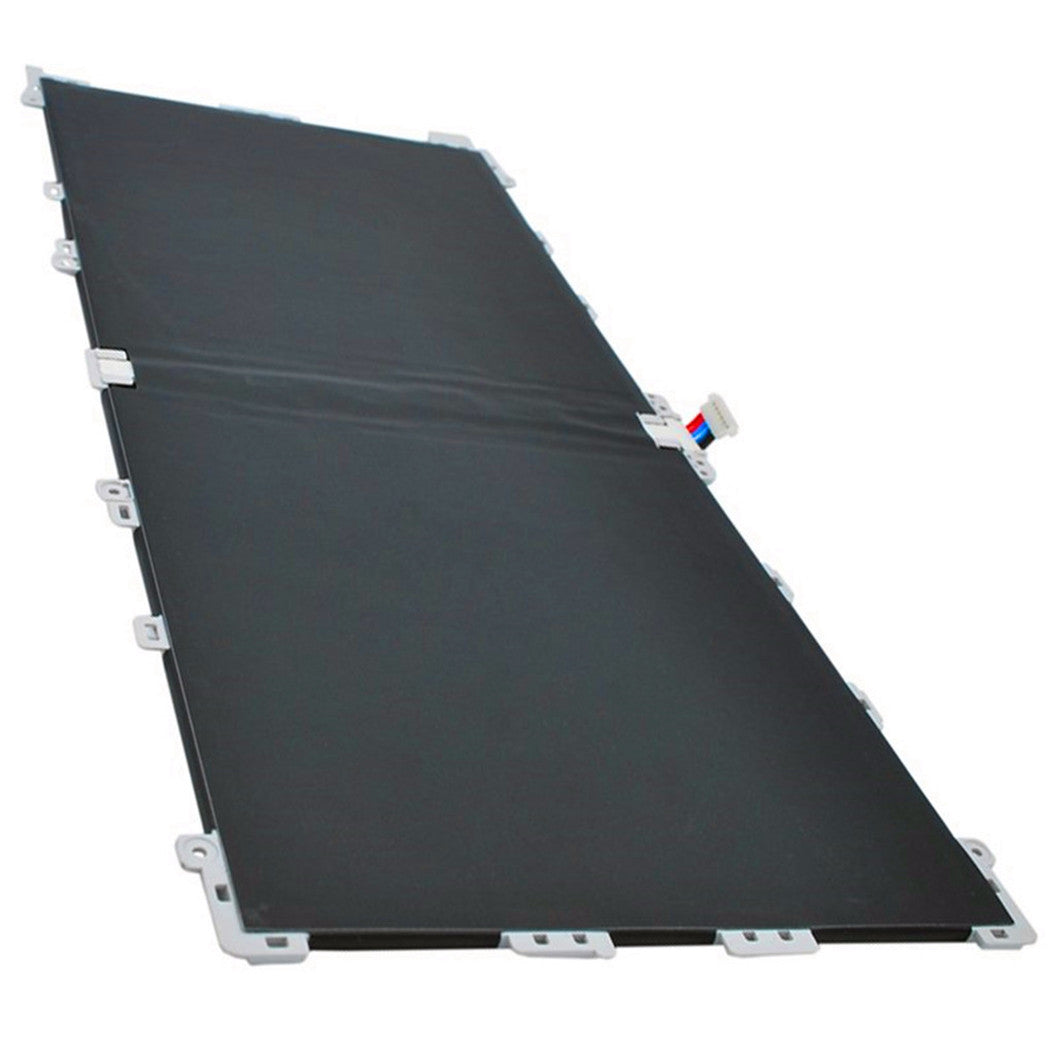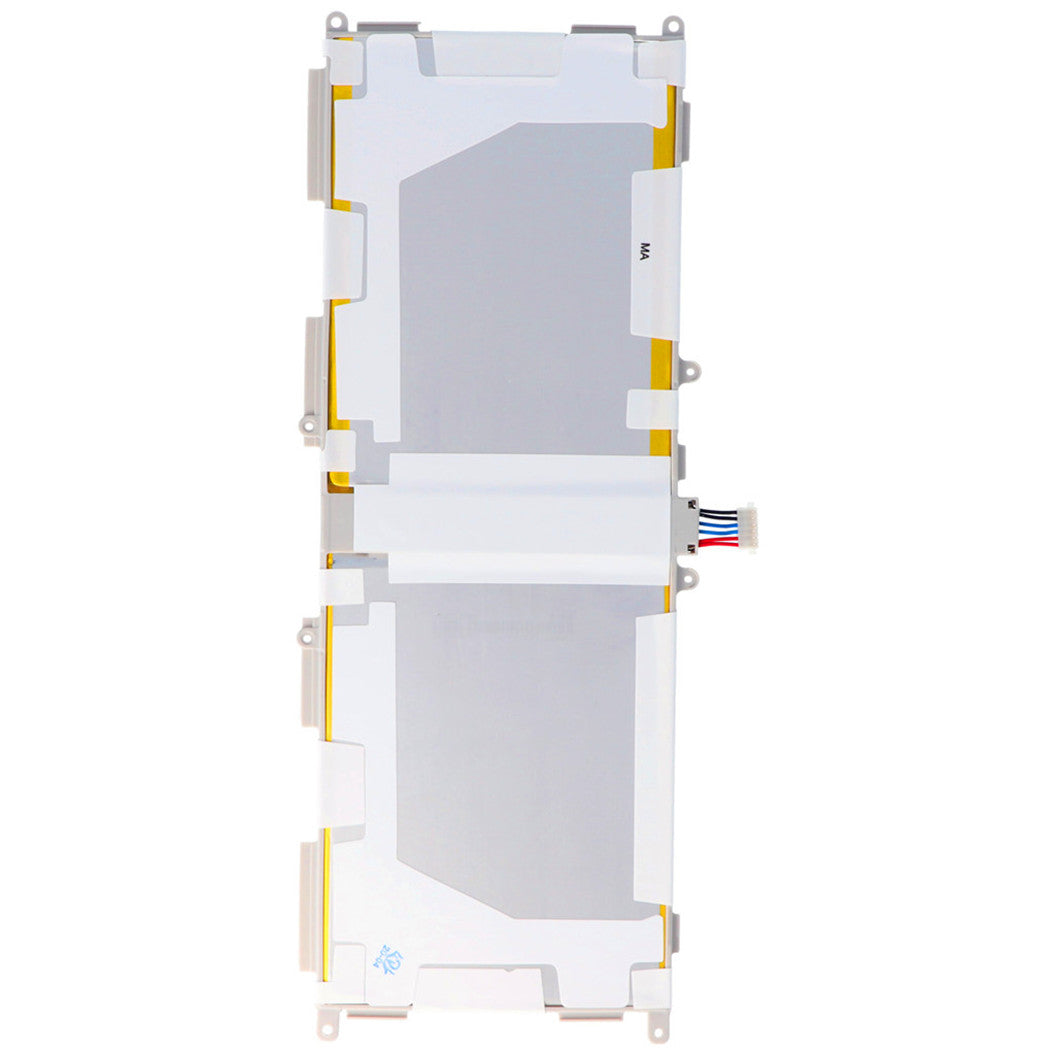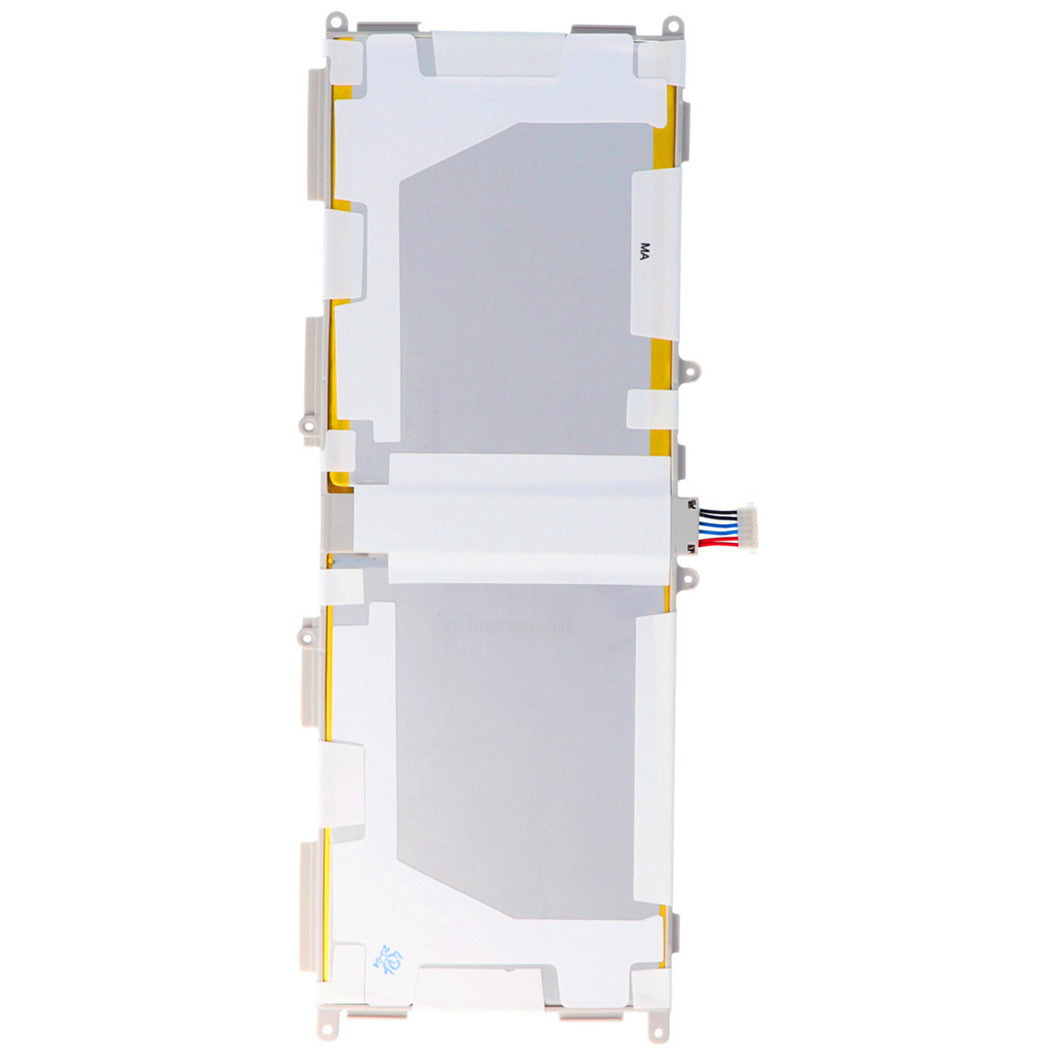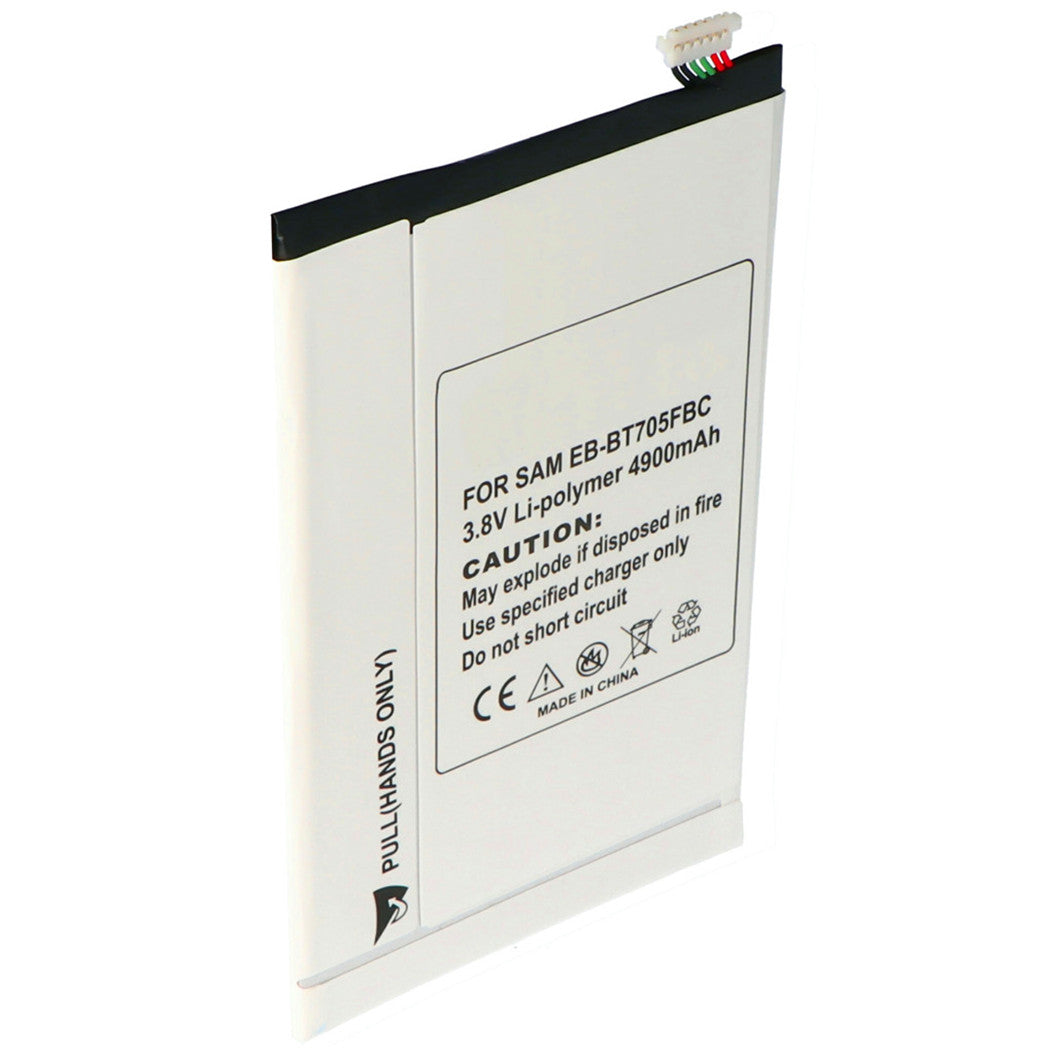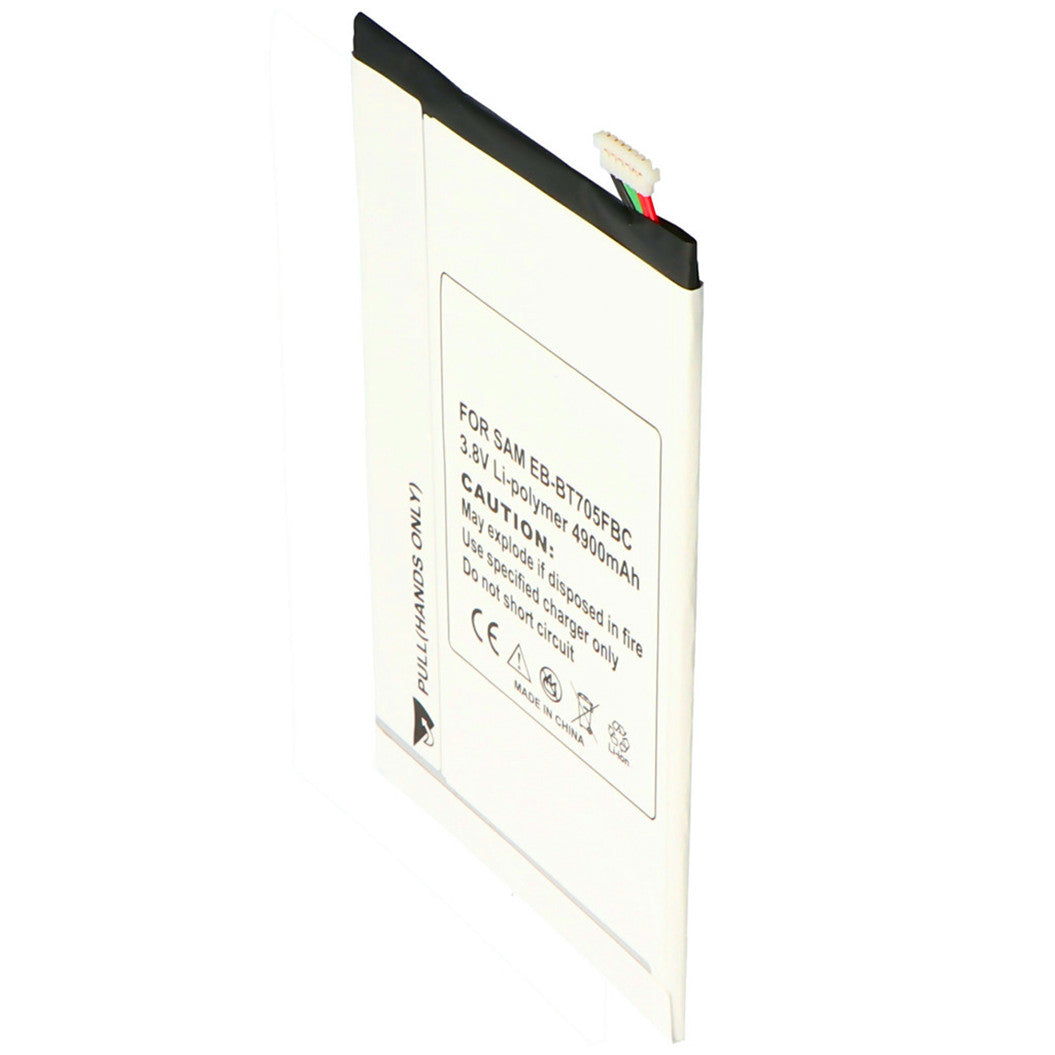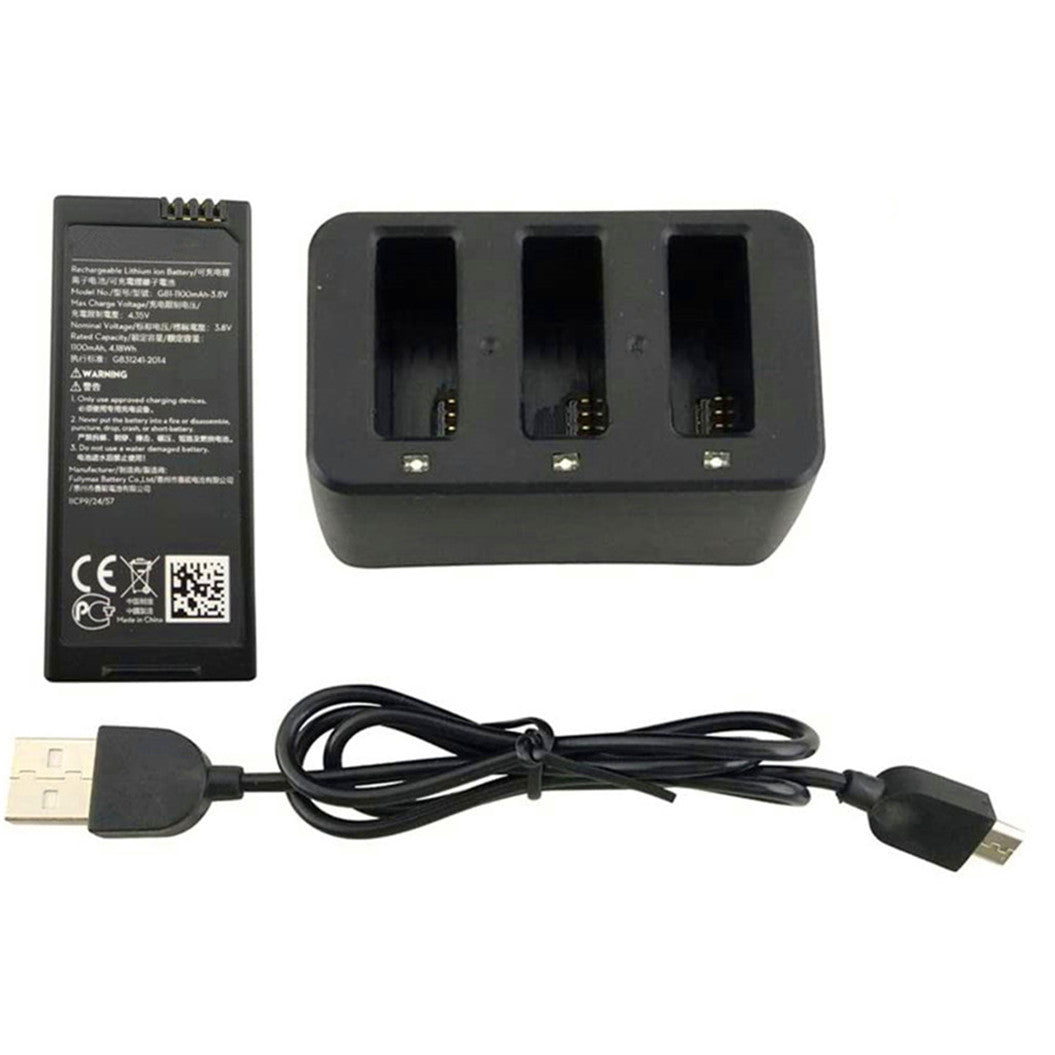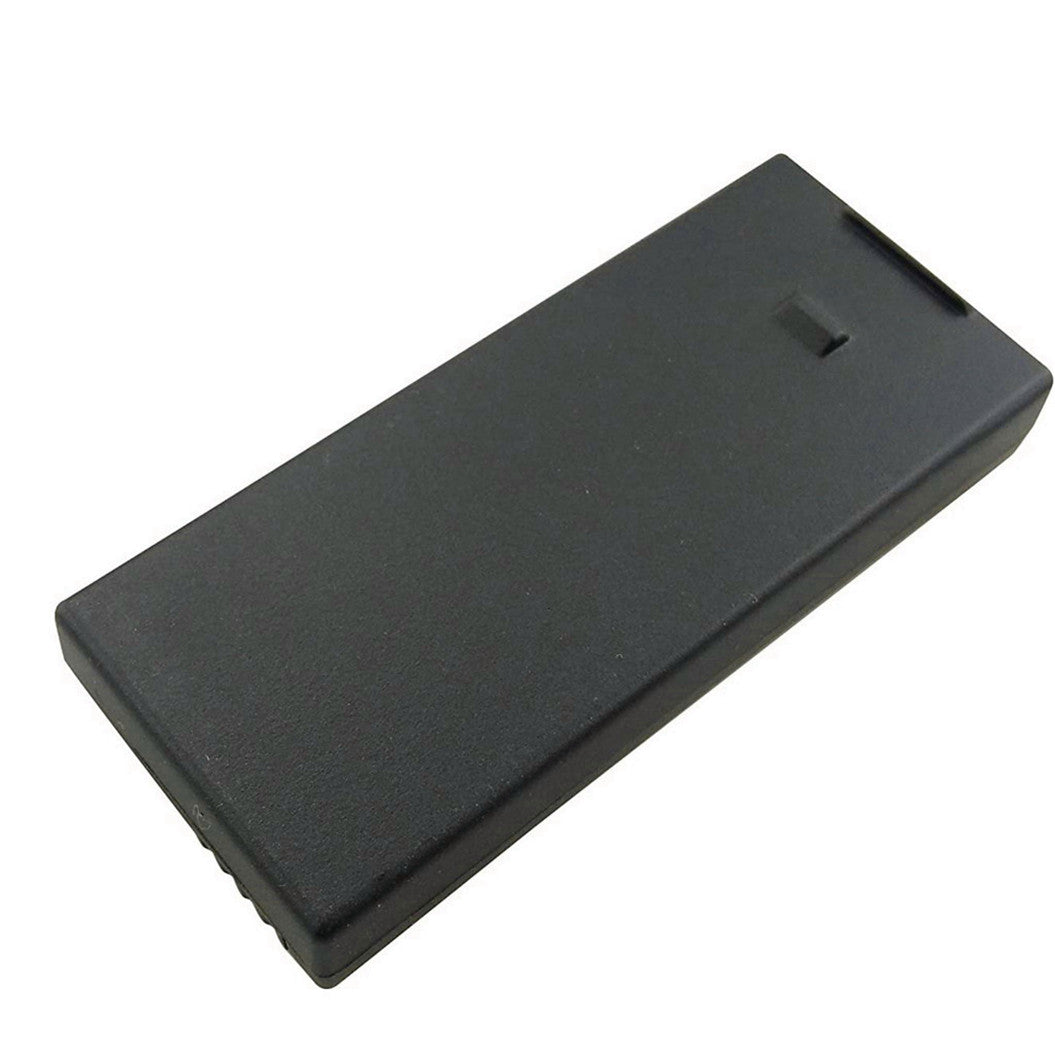-
販売元:BATTERYINT
3750mAh HB386590ECW バッテリー Huawei Honor 8X / Glory / View 10 Lite JSN-LX1 LX2 LX3 L21 L23 L22 + ツール
- 通常価格
- $18.05
- 通常価格
-
- セール価格
- $18.05
- 単価
- あたり
3750mAh HB386590ECW バッテリー Huawei Honor 8X / Glo... -
販売元:BATTERYINT
3830mAh Li-Polymer 交換用バッテリー DJI Mavic Pro セルアキュムレーター
- 通常価格
- $21.99
- 通常価格
-
- セール価格
- $21.99
- 単価
- あたり
3830mAh Li-Polymer 交換用バッテリー DJI Mavic Pro セルアキュ... -
販売元:BATTERYINT
357090 3.7V 3000mAh リチウムポリマーバッテリー Irbis TX01 TZ02 TZ01 TZ72 TZ43 TZ53用
- 通常価格
- $12.99
- 通常価格
-
- セール価格
- $12.99
- 単価
- あたり
357090 3.7V 3000mAh リチウムポリマーバッテリー Irbis TX01 TZ... -
販売元:BATTERYINT
3100mAh 11.1V LiPoバッテリー Parrot Bebop 2 ドローンRCクワッドコプター用
- 通常価格
- $39.99
- 通常価格
-
- セール価格
- $39.99
- 単価
- あたり
3100mAh 11.1V LiPoバッテリー Parrot Bebop 2 ドローンRCクワ... -
販売元:BATTERYINT
3000mAh BL9403 交換用携帯電話バッテリー Fly Selfie 1 FS520 + 3本のワイヤートラック番号+ツール
- 通常価格
- $18.26
- 通常価格
-
- セール価格
- $18.26
- 単価
- あたり
3000mAh BL9403 交換用携帯電話バッテリー Fly Selfie 1 FS520 ... -
販売元:BATTERYINT
3.8V 新しい交換用バッテリー General Mobile GM 5 Android One GM5 4G デュアル GM4G GM5D 5D セル携帯電話用バッテリー
- 通常価格
- $19.76
- 通常価格
-
- セール価格
- $19.76
- 単価
- あたり
3.8V 新しい交換用バッテリー General Mobile GM 5 Android On... -
販売元:BATTERYINT
3.8V 7900mAh リチウムポリマーバッテリー SAMSUNG Galaxy Tab S 10.5 SM-T800, SM-T805 用
- 通常価格
- $45.05
- 通常価格
-
- セール価格
- $45.05
- 単価
- あたり
3.8V 7900mAh リチウムポリマーバッテリー SAMSUNG Galaxy Tab S... -
販売元:BATTERYINT
3.8V 6000mAh 22.8Wh バッテリー Samsung Galaxy Tab S3 9.7 XLTE, SM-T820, SM-T825 用
- 通常価格
- $41.95
- 通常価格
-
- セール価格
- $41.95
- 単価
- あたり
3.8V 6000mAh 22.8Wh バッテリー Samsung Galaxy Tab S3... -
販売元:BATTERYINT
3.8V 9500mAh リチウムポリマーバッテリー Samsung Galaxy Note Pro 12.2, P901, P905, SM-P900, T900 用
- 通常価格
- $53.35
- 通常価格
-
- セール価格
- $53.35
- 単価
- あたり
3.8V 9500mAh リチウムポリマーバッテリー Samsung Galaxy Note ... -
販売元:BATTERYINT
3.8V 6800mAh バッテリー Samsung SM-T530, Galaxy Tab 4 10.1 用
- 通常価格
- $34.86
- 通常価格
-
- セール価格
- $34.86
- 単価
- あたり
3.8V 6800mAh バッテリー Samsung SM-T530, Galaxy Tab ... -
販売元:BATTERYINT
3.8V 4900mAh リチウムポリマーバッテリー Samsung Galaxy Tab S 8.4 SM-T700, SM-T705 EB-BT705FBC用
- 通常価格
- $26.08
- 通常価格
-
- セール価格
- $26.08
- 単価
- あたり
3.8V 4900mAh リチウムポリマーバッテリー Samsung Galaxy Tab S... -
販売元:BATTERYINT
3.8V 1100mAh リチウムバッテリー 充電器付き TELLO ドローンカメラ アクセサリー用
- 通常価格
- $51.35
- 通常価格
-
- セール価格
- $51.35
- 単価
- あたり
3.8V 1100mAh リチウムバッテリー 充電器付き TELLO ドローンカメラ アクセサ...
ショーイング 253 -264 の 344 項目
1. How to Charge Lipo Battery?
These are the safe charging tips for LiPo batteries:
- Always use a charger specifically designed for LiPo batteries to prevent overcharging or undercharging.
- Before charging, set the charger’s current and voltage to match the battery’s specifications, typically at 1C, which is twice the battery’s capacity.
- During charging, place the lithium ion polymer battery in a fireproof bag or on a flat surface that is free of flammable materials.
- Closely monitor the lithium polymer battery during charging and ensure that it is not left unattended for extended periods.
- Always use a charger specifically designed for LiPo batteries to prevent overcharging or undercharging.
- Before charging, set the charger’s current and voltage to match the battery’s specifications, typically at 1C, which is twice the battery’s capacity.
- During charging, place the lithium ion polymer battery in a fireproof bag or on a flat surface that is free of flammable materials.
- Closely monitor the lithium polymer battery during charging and ensure that it is not left unattended for extended periods.
2. How to Store Lipo Battery?
When storing Lithium Polymer (LiPo) batteries, they should be kept at approximately 50% charge, which will help to prolong battery life. The lithium ion polymer battery should be stored in a dry, cool environment, away from direct sunlight and extreme temperatures.
In addition, batteries should be stored in a fireproof bag or special safety box to prevent accidents. In addition, if not used for a long period, perform a light charge and discharge every few months to maintain battery performance.
In addition, batteries should be stored in a fireproof bag or special safety box to prevent accidents. In addition, if not used for a long period, perform a light charge and discharge every few months to maintain battery performance.
3. What Is the Lifespan of a Lipo Battery?
In general, lithium polymer batteries can support approximately 300 to 500 charge/discharge cycles if properly used and maintained. To extend battery life, avoid overcharging and over-discharging, and keep the lithium ion polymer battery at the proper temperature during use and storage.
4. How to Prevent Lipo Battery from Expansion and Explosion?
These tips below prevent lithium polymer (lipo) batteries from expanding or explosion:
- Ensure that you are using a charger that is specifically designed for LiPo batteries and that you strictly follow the battery’s charging specifications.
- Avoid exposing the lithium polymer battery to extreme temperatures or direct sunlight during charging and use.
- Ensure that the lithium ion polymer battery is not physically damaged. Regularly inspect the battery for any signs of wear or damage.
- If the LiPo batteries show signs of swelling, discontinue use immediately to prevent further risks such as expansion or explosion.
- Ensure that you are using a charger that is specifically designed for LiPo batteries and that you strictly follow the battery’s charging specifications.
- Avoid exposing the lithium polymer battery to extreme temperatures or direct sunlight during charging and use.
- Ensure that the lithium ion polymer battery is not physically damaged. Regularly inspect the battery for any signs of wear or damage.
- If the LiPo batteries show signs of swelling, discontinue use immediately to prevent further risks such as expansion or explosion.
5. What Is the Difference Between a 4s Lipo Battery and a 3s LiPo Battery?
The main differences between 4s lipo batteries and 3s LiPo batteries are the number of cells and the total voltage. 3s batteries consist of three cells in series and typically have a voltage of 11.1 volts, while 4s batteries consist of four cells in series and typically have a voltage of 14.8 volts.
However, higher voltages may also require electronic equipment to have a higher voltage tolerance, so the voltage compatibility of equipment must be considered when choosing a lithium polymer battery.
However, higher voltages may also require electronic equipment to have a higher voltage tolerance, so the voltage compatibility of equipment must be considered when choosing a lithium polymer battery.
6. How Long Does It Take to Charge a 4s Lipo Battery?
Typically, most 4-cell LiPo batteries take about 1 to 1.5 hours to fully charge when charged at a 1C charge rate (i.e. the current value for the rated capacity of the battery).
For example, a 5000mAh battery will take about 1 hour to fully charge at 5A charge current. Ensure that you use the appropriate charger for your lithium polymer battery to maintain its health and safety.
For example, a 5000mAh battery will take about 1 hour to fully charge at 5A charge current. Ensure that you use the appropriate charger for your lithium polymer battery to maintain its health and safety.
7. Which Is Better, Lifepo4 or Lipo Battery?
LiFePO4 batteries are known for their longer life and increased safety. It is usually more suitable for applications that require long-term reliability, such as electric vehicles and solar energy storage systems.
LiPo batteries, on the other hand, offer higher energy density and power output. Ideal for devices with stringent weight and size requirements, such as UAVs and RC models.
LiPo batteries, on the other hand, offer higher energy density and power output. Ideal for devices with stringent weight and size requirements, such as UAVs and RC models.
8. Which Is Better, Nimh or Lipo Battery?
NiMH batteries are more environmentally friendly and less expensive, making them suitable for every day and low-power devices.
LiPo batteries, on the other hand, offer higher energy density and discharge rates, making them more suitable for use in high-power devices such as drones and high-performance RC cars.
LiPo batteries, on the other hand, offer higher energy density and discharge rates, making them more suitable for use in high-power devices such as drones and high-performance RC cars.

